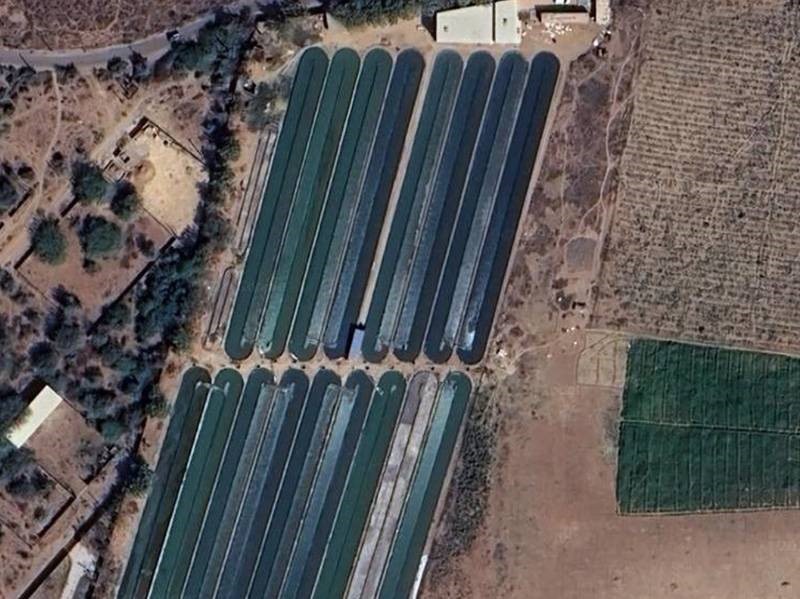Spirulina cultivation facilities have gained significant attention due to the remarkable nutritional profile of this blue-green algae. Spirulina is a rich source of protein, vitamins, and minerals, making it an attractive supplement for both human and animal consumption.
Here we will delve into the best practices and techniques for optimizing spirulina cultivation, covering essential aspects such as facility preparation, step-by-step cultivation processes, harvesting and processing methods, and strategies for scaling up production efficiently.
Spirulina Cultivation Facilities
For successful spirulina cultivation, proper preparation is crucial. Here are the key steps:
Gathering Materials and Tools
- Cultivation ponds: Concrete or plastic-lined shallow ponds with a depth of 20-30 cm.
- Paddle wheels: For stirring and mixing the culture, sized according to the pond dimensions.
- Starter culture: High-quality spirulina strain for inoculation.
- Water source: We need a water source with 7 to 8 ph. Which will then modify to be 8 to 11
- Nutrient solutions: Essential salts and micronutrients to support spirulina growth.
Site Preparation and Layout
- Choose a location with ample sunlight exposure and warm temperatures (30°C-35°C).
- Construct or install the cultivation ponds, ensuring proper drainage and water circulation systems.
- Set up paddle wheels for continuous mixing and aeration of the culture.
- Establish a water treatment system to maintain the desired pH and nutrient levels.
Understanding Environmental Needs
- Light intensity: Spirulina thrives in bright sunlight, with an ideal range of 20-30 K lux.
- Temperature: Maintain water temperatures between 30°C-35°C for optimal growth.
- pH levels: Keep the culture medium pH between 8-11 by adding appropriate alkaline solutions.
- Contamination control: Implement measures to prevent contamination from insects, foreign algae, or chemical pollutants.
By carefully preparing the cultivation site, gathering the necessary materials, and understanding spirulina’s environmental requirements, you can create an optimal environment for successful and efficient spirulina production.
Step-by-Step Cultivation Process
Seeding the Pond
The cultivation process begins by seeding the prepared ponds with spirulina. Ideally, 30 grams of dry spirulina should be added for every 10 liters of water to ensure uniform growth and harvesting. Alternatively, a concentrated live spirulina culture can be used as a seed. In commercial farms, a dedicated pond is often reserved for rearing spirulina as a seed culture, reducing the need for regular purchases and enabling self-sustenance.
Maintaining Optimal Conditions
- pH levels: Spirulina thrives in an alkaline environment with a pH range of 8.5-10.5. Regular monitoring and adjustments using sodium carbonate or other alkaline solutions are necessary to maintain the optimal pH.
- Temperature: Warm temperatures between 25°C and 35°C are ideal for spirulina growth. Proper insulation, shading, and temperature control systems should be implemented to maintain a stable temperature within this range.
- Light: Spirulina requires moderate to high light intensity for photosynthesis, around 70% of full sunlight for 16 hours per day. Direct sunlight should be avoided to prevent overheating and damage.
- Aeration: Gentle aeration or stirring is essential to keep the culture well-oxygenated and evenly distributed, without damaging the delicate spirulina filaments.
Daily Care and Monitoring
- Nutrient levels: Spirulina requires specific nutrients like nitrogen, phosphorus, and potassium. Regular monitoring and supplementation with appropriate fertilizers or nutrient solutions are crucial for optimal growth.
- Water level: The water level should be maintained at 20-30 cm, with fresh water added regularly to compensate for evaporation, especially during summer months.
- Contamination control: Strict measures should be implemented to prevent contamination from insects, foreign algae, or chemical pollutants, as spirulina cultures can perish rapidly if not properly cared for.
- Harvesting: When the spirulina concentration exceeds the desired level (Secchi 2), harvesting should be initiated to maintain optimal growth conditions.
Harvesting and Processing Spirulina
Identifying the Right Time to Harvest
Determining the optimal time for harvesting spirulina is crucial. It is recommended to harvest when the pH levels are between 10-11, as spirulina thrives in an alkaline environment. Additionally, using a Secchi ruler to measure the concentration, if the reading is below 3cm, it indicates the culture is ready for harvesting.
Methods of Harvesting
- Filtration is the primary method for harvesting spirulina. A tight nylon filter of 30-50 microns is used to separate the biomass from the liquid culture.
- The filter can be attached to a wooden frame above the pond, and the liquid is raked through until a thick green paste forms on top.
- The fresh biomass should be washed and drained at least twice to remove excess nutrients and reduce the pH to a more palatable level.
Processing and Storage Options
- Freezing the fresh biomass is considered the best method for preserving spirulina’s nutrients.
- For longer shelf life, drying the spirulina is most effective. Commercial producers may use spray dryers, while home growers can opt for sun-drying or electric food dehydrators.
- Tools like spaghetti makers or drying racks can be used to create thin strands or layers for efficient sun-drying, avoiding direct sunlight to prevent pigment damage.
- After drying, the spirulina can be ground into a powder and stored in airtight containers for extended periods.
Scaling Up Your Spirulina Production
Assessing Your First Harvest
After the initial cultivation cycle, it’s crucial to assess the quality and quantity of your spirulina harvest. Evaluate factors like color, texture, and nutrient content to ensure optimal growth conditions were maintained. This assessment will help identify areas for improvement and guide decisions for scaling up production.
Expanding Cultivation Capacity
- Increase Pond Size: Gradually expand the cultivation area by constructing additional ponds or enlarging existing ones, ensuring proper water circulation and aeration systems are in place.
- Optimize Environmental Conditions: Refine temperature control, lighting, and nutrient management based on your initial harvest assessment to create an ideal environment for spirulina growth.
- Automate Processes: Invest in automated systems for tasks like paddle wheel operation, nutrient dosing, and harvesting to streamline operations and reduce manual labor.
Integrating Advanced Techniques
- Closed Photobioreactors: Consider transitioning to closed photobioreactors, which offer better control over environmental factors and reduce contamination risks, leading to higher yields and consistent quality.
- Nutrient Recycling: Implement nutrient recycling systems to recover and reuse valuable nutrients from the harvested biomass, reducing operational costs and promoting sustainability.
- Quality Control Measures: Implement stringent quality control protocols, including regular testing for contaminants, to ensure the spirulina meets regulatory standards and maintains its nutritional integrity.
Conclusion
Optimizing spirulina cultivation is a multifaceted endeavor that involves meticulous planning, execution, and continuous monitoring. By adhering to the best practices growers can establish a thriving spirulina production system that yields high-quality biomass consistently. From site preparation and environmental control to efficient harvesting and processing methods, each step plays a crucial role in maximizing yields and ensuring the nutritional integrity of the final product.
As the demand for spirulina continues to rise, scaling up production becomes inevitable. Through careful expansion planning, integration of advanced techniques, and implementation of quality control measures, spirulina cultivation facilities can meet the growing market demands while maintaining sustainability and adherence to regulatory standards. With the right approach, spirulina cultivation can be a rewarding and environmentally friendly endeavor, providing a valuable source of nutrition for both human and animal consumption.




